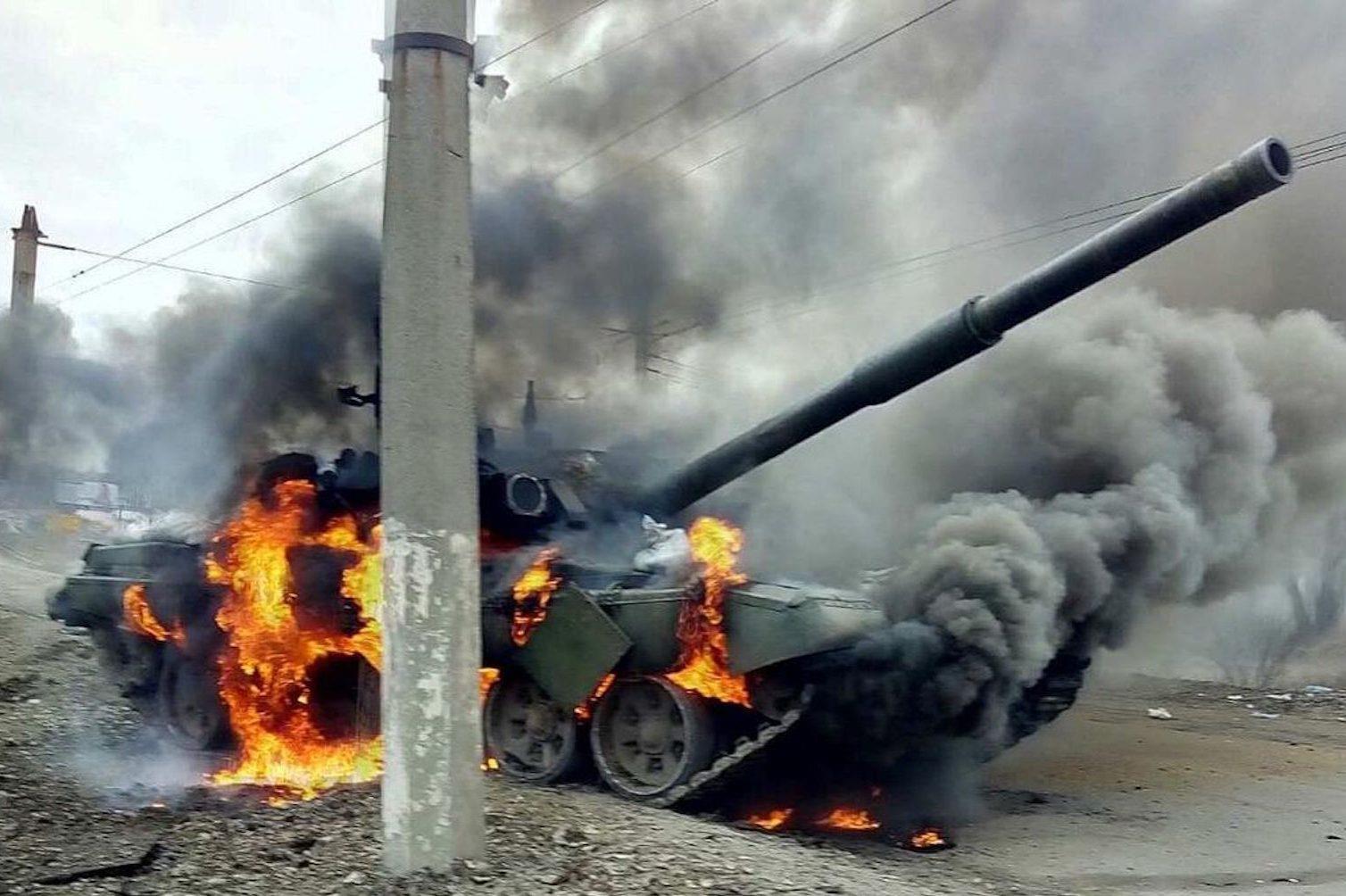(MENAFN- Asia Times)
Throughout history, there have been occasions when military technology strengthened the defense more than the offense. That seems to be the case in Russia's current war against Ukraine.
Ukraine is benefiting from a tilt in the balance of military Technology from offense to defense, a tilt that has been decades in the making.
Over the centuries there've been numerous such shifts. Early machine guns, heavy and difficult to move, favored the in situ defense: Just position the gun in a well-defended spot and mow down the charging light brigade.
That advantage receded when the British mounted the gun on a mobile platform developed under the code name“water tank.” Tank warfare strengthened the attacking force by bringing mobile firepower right up on the defending forces.

A British Mark I 'male' tank near Thiepval in the Somme, northern France, on September 25, 1916. It's fitted with wire mesh – to deflect grenades – and the initial steering tail, which is shown raised. Photo: Ernest Brooks / Wikipedia
An early anti-tank weapon, the bazooka, had to be fired at close range to kill the tank with its explosive charge – but that was at times more lethal for those firing the bazooka.
Tilt!
Eventually, an offensive combination of tanks, infantry and air power proved hard to stop.
In order for the defense to regain the edge, a new anti-tank weapon had to be developed: a stand-off weapon that could be fired from a distance to protect the soldier firing the weapon – a weapon smart enough to follow a moving tank in the dark.
In the last decade or so the same technology that gave us the smartphone has given the Ukrainian forces such smart weapons.
Ukrainian soldiers can fire a Javelin or NLAW anti-tank guided missile (ATGM) from more than a kilometer from a moving tank and just wait for the missile to rise up and slam down on the top of the tank, where the armament is thin.
A man-portable missile, priced at roughly US$200,000 for Raytheon and Lockheed Martin's Javelin and $26,000 for the British NLAW, can destroy a Russian tank priced at more than $5 million. The battlefield success rate for the Javelin, even better than its proving-ground reliability rate, is reportedly better than 90%.
During the Gulf wars, American infantry envied the tank crews protected by their armor. Now Russian tank crews, so aware of their huge target profile, appear envious of the infantry. That may explain the number of tanks being abandoned.

A damaged Russian armored personnel carrier near Kharkiv on February 24. Photo: Ukrainian Defense Ministry Press Service
Lost air superiority
The conventional doctrines of air superiority are also being challenged very cheaply.
Lacking a fleet of $25 million fighter jets, expensively trained pilots and a sprawling airbase supported by thousands of airmen, Ukrainians are effectively preventing the Russians from maneuvering as if they had air superiority.
This is being done with a shoulder-launched missile developed almost four decades ago that has become smarter and smarter over the years.
The missiles' effectiveness is limited to low altitude attack aircraft. But high flying aircraft need expensive precision-guided munitions to be effective and Russia simply does not have enough precision munitions .
Repeating success in the Southeast?
How does the warfare change when the Russians move the battle to the east and the south, as intelligence suggests is happening – where the terrain is flatter and the ground is seasonally more solid for off-road maneuvers?
There are fewer places for the Ukrainians to engage in ambush-type precision warfare that was so successful in the hilly and forested area north of Kiev.
So the east and south of Ukraine the terrain arguably is better for the Russians to leverage their superiority in the number of armored vehicles – as they did during the World War II battle of Kursk, inside Russia but just north of the Ukrainian border city of Kharkiv. The Soviets at one point fielded 850 tanks versus 290 for the Nazis.
Although the Soviets lost more than half their tanks and the Nazis under a fifth of their own, the outcome is still debated – because, thereafter, the Nazis were in constant retreat in the east.

A Russian T-90 tank burns in the Kiev region. Photo: war.ukraine.ua
Eight decades later
Now, in the 21st century, imagine the Russians fielding hundreds of tanks and the Ukrainians defending with hundreds – no, thousands – of anti-tank guided missiles.
You want to maintain distance in such a battle and the Ukrainian-made ATGM has an effective distance of 5.5 kilometers in daylight. Ukraine used to be a center of Soviet aerospace research, and its weapons development continues.
It is still too early to be writing an obituary for tanks and armored vehicle warfare. Their utility combined with air power and infantry can be immense.
But the logic of moving around firepower on a heavily armored standalone vehicle – costing upwards of $8 million a copy, in constant need of refueling and maintenance and requiring three or more crew – is likely to be brought increasingly into question as those behemoths are confronted by cheaper, unmanned, expendable multi-purpose platforms with smart munitions.
Russia chose to fight a war of aggression with 20th-century hardware and doctrine. Ukraine is fighting back with 21st-century smart munitions and not much else besides hardened determination. We should not be surprised which side is making the smarter move.
Throughout history, the offense has usually suffered a higher casualty rate than the defense. But with today's smart munitions, the tilt is in favor of the defense.
MENAFN12042022000159011032ID1103996343
Legal Disclaimer:
MENAFN provides the information “as is” without warranty of any kind. We do not accept any responsibility or liability for the accuracy, content, images, videos, licenses, completeness, legality, or reliability of the information contained in this article. If you have any complaints or copyright issues related to this article, kindly contact the provider above.